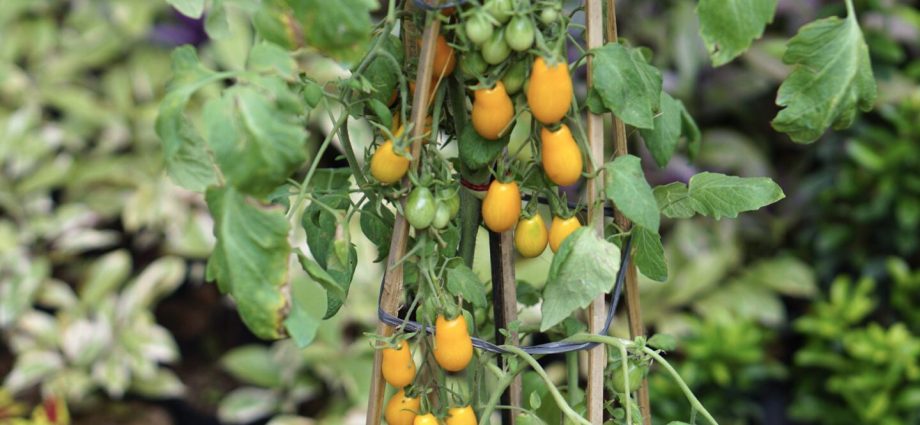Contents
Cherry tomatoes are one of the few plants that have been introduced into cultivation quite recently, unlike other tomatoes that have been grown for more than one century. Little cherry tomatoes quickly became fashionable. And quite deservedly – they have many undeniable advantages, including excellent taste. There are no such sweet varieties among large-fruited tomatoes.
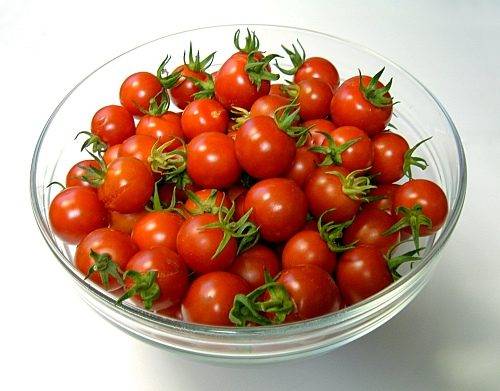
Growing cherry tomatoes has its own characteristics. There are many varieties for any conditions. Among small-fruited tomatoes there are liana-like plants that reach three meters and quite crumbs, hardly more than 30 cm. It is the latter that are suitable not only for open ground and greenhouses, but also for a balcony and even for an apartment. Among them there are varieties specially adapted to the lack of lighting. The root system of such babies is compact, which allows you to grow these tomatoes in flower pots.
Cherry for the balcony
What requirements should tomato varieties for balconies meet?
- They must move quickly.
- Be small in size.
- Be undemanding to growing conditions.
Cherry varieties for home or balcony
You can grow the following cherry varieties at home.
- Traditional and familiar: Balcony miracle, Bonsai, Minibell, Basket on the window, Pinocchio. All these varieties are early, very compact, give tasty and elegant fruits. But they have one drawback – they start fruiting early, they quickly finish it.
- Recently created Cherry hybrids: Ira F1, Cherry Lycopa F1, Cherry Kira F1, Cherry Maxic F1, Cherry Liza F1 are free from this drawback. Planted in containers of at least 8 liters, they can bear fruit until January even at room conditions. But these hybrids will require shaping and garters.
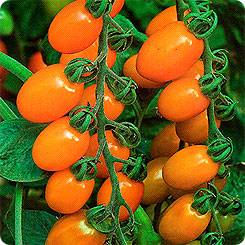
They will prolong the season for consuming fresh and healthy tomatoes for a long time. But in order to continue fruiting, they need backlighting.
Cherry in the open field
For growing cherry tomatoes in the open field in the middle lane, it is better to choose determinant varieties and hybrids that ripen early
Cherry Blossam F1
This is a powerful plant 1 m high. It ripens early, after 100 days. To harvest a good harvest, this hybrid is led into 3 trunks, a garter is needed. The fruits are red and round, weighing approximately 30 g. Well preserved.
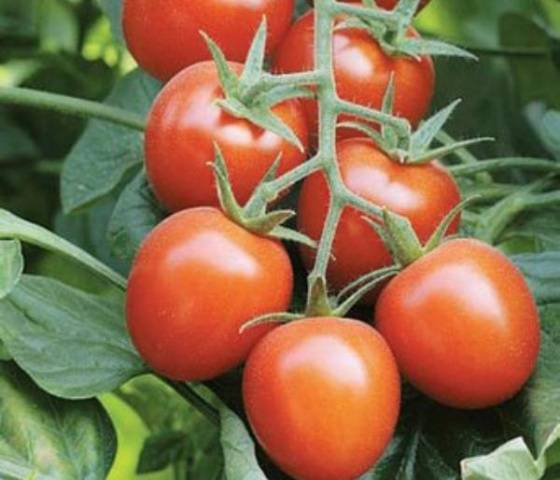
Granddaughter
Red round tomatoes come in weights of 20 g or more. The bush is low, only 50 cm, does not need to be formed and gartered.
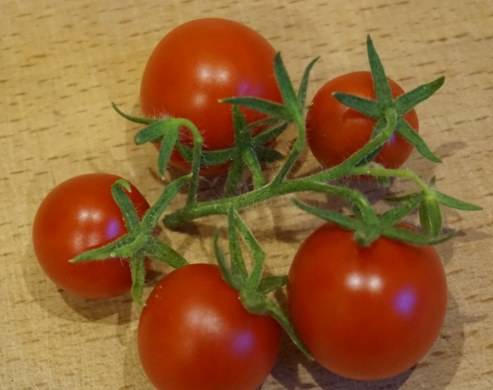
Irishka
This is a low cherry variety, no more than 50 cm, it is characterized by early ripeness and rather large red fruits – up to 30 g. The variety can not be tied up or stepsoned.
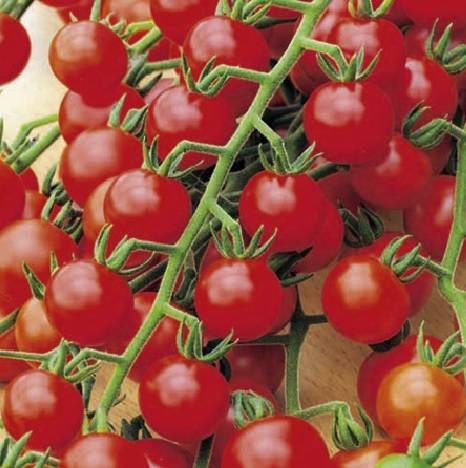
Honey CandyF1
A very sweet hybrid with yellow-orange plum-like fruits weighing up to 30 g. It is medium early in terms of ripening, 110 days will have to wait until the first fruit is ripe. A multiple brush can consist of 28 tomatoes. A bush grows up to 80 cm. They form a plant in 2-3 trunks, a garter is required.
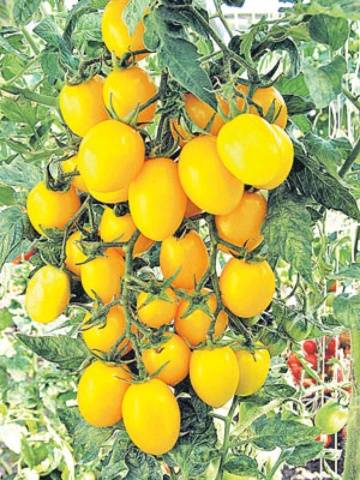
Greenhouse cherry
Small-fruited tomatoes are most productive when grown in a greenhouse. A long fruiting period of up to 6 months allows you to extend the time of consumption of this delicacy for a long time. In order to fully use the entire space of the greenhouse, it is better to grow tall indeterminate varieties in it.
It is there that they fully realize their potential and give a record harvest. In the heat, such a greenhouse needs constant ventilation.
Cherry for the greenhouse
Quiche-mish red, orange and yellow F1
Hybrids that differ only in fruit color. They grow above 1,5 m, the ripening period is medium-early. The fruits are medium-sized, only about 20 g, but very sweet. The brush is multiple, the number of tomatoes in it can reach 50 pieces.
Plants need not only garter and formation in 2 stems, but also crop rationing. More than 6 brushes do not need to be left on it.
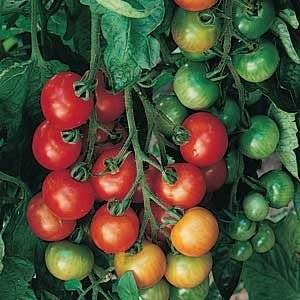
Miracle Bunch F1
An indeterminate tomato with complex racemes consisting of red balls weighing 20 g. The variety is early ripe, it needs shaping and garter.
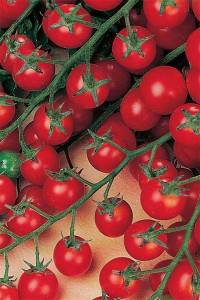
Black chocolate
The variety is indeterminate mid-season, the fruits are dark almost black in color. The type of fruit is cocktail, weight is about 35 g. Forming into 2 or 3 stems and a garter is needed.

Black cherry
Tall variety up to 3,5 m, ripening period is very early. The first fruits-cherries can be tasted after 65 days. Tomatoes are small, typical cherry tomatoes weighing about 25 g. This tomato is carried in one stem with a mandatory garter.

Wherever you are going to grow cherry tomatoes, you will have to start this process with growing seedlings. When to sow seeds for seedlings? Each region will have its own sowing dates. They are calculated, knowing that by the time of planting, the age of young tomatoes should be from 55 to 60 days. For late varieties, it should be one and a half weeks more, and for early varieties it may be less.
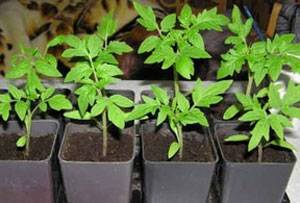
Stages of growing seedlings of cherry tomatoes
Growing cherry tomatoes starts with seeds. Proper preparation for sowing is the key to strong seedlings and the health of the tomato as a whole. Seeds are treated by keeping in a 1% solution of potassium permanganate for 20 minutes, then washed with running water and treated with a growth stimulator, for example, epin or HB 101 vitalizer according to the instructions.
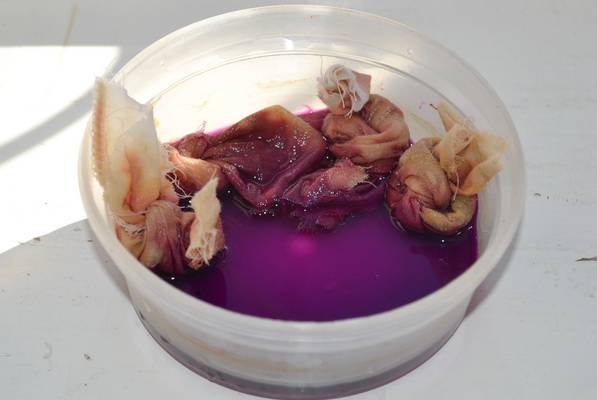
If fresh seeds are soaked, the juice is diluted with water twice, if the seeds are doubtful in terms of germination, the juice does not need to be diluted. Soaking time is about a day. If the seeds are processed by the manufacturer, which is necessarily written on the package, then they are sown without preparation.

Prepared seeds are sown in the ground. It is best to buy specialized soil for tomatoes. Seeds are sown in containers at a depth of 0,5 cm.
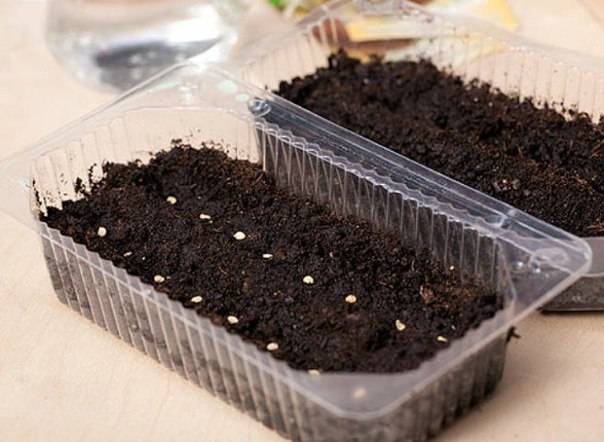
The soil should be moist, but not waterlogged. Seeds need to be sprinkled with earth and cover the container with glass or film, you can put it in a plastic bag.
The melt water into which it will turn has amazing properties and is very useful for future seedlings. If possible, it is also good to water the seedlings with melt water. Useful properties are stored in it for 12 hours after the snow melts.
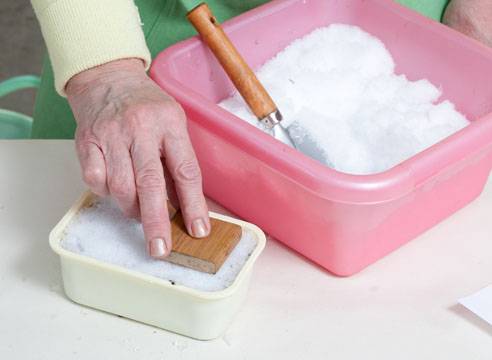
The appearance of the first loops of seedlings is a signal that you need to put the container with seedlings in the brightest place on the windowsill. The package must be removed. Reducing the temperature to 15 degrees during the day and 12 at night is an important condition so that young shoots do not stretch. After 5-6 days, the temperature is raised and maintained at an optimal level: about 20 degrees during the day and about 16 at night.
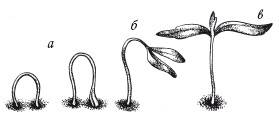
When the seedlings release the third leaf, and it happens a month after germination, it is necessary to start picking it. 3 hours before her seedlings are well watered. Each plant must be planted in a separate cup, while pinching the central root so that the tomatoes form a strong and branched root system before planting.
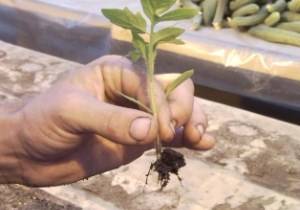
It is best not to touch the plant at all, carefully choosing a clod of earth with roots, but if this does not work out, it is permissible to hold the seedlings by the leaves.
If several varieties of cherry tomatoes are grown, so as not to confuse anything later, it is better to sign each cup.
Some gardeners use special cassette seedlings for picking. They are equipped with a tray that will keep the windowsill clean.

After picking, the seedlings are shaded for several days so that the seedlings take root better. Further care for her consists in careful watering and fertilizing with complex mineral fertilizer once every 2 weeks.
It needs only 1-2 drops per liter. Seedlings will be much stronger and will not stretch as much.
Cherry in the open field
Planting seedlings
Seedlings are planted in open ground if frost is no longer expected. The planting pattern depends on the habit of the tomato. The smaller the plant, the less nutritional area it requires. On average, per 1 sq. m beds planted 4 plants. The preparation of beds and planting holes is the same as for large-fruited varieties. Since autumn, the beds have been fertilized with humus and superphosphate, respectively 10 kg and 80 g per 1 sq. m. Planting holes are filled with a handful of humus, and preferably compost, a tablespoon of ash is added there. Cherry tomatoes love fertile soil, but excess nitrogen is harmful to them. Tomatoes are especially demanding on potash fertilizers.

Seedlings before planting must be accustomed to new conditions of existence. To do this, in warm weather, it is taken out into the open air, at first for a short time, gradually increasing the time it spends on the street. On warm nights, you can not bring it home.
Well-watered seedlings are planted, carefully removing them from the cup. Plants are buried to the first true leaf. The hole needs to be watered, at least a liter per tomato. From above, the soil is sprinkled with dry earth or humus to reduce the evaporation of water. Planted tomatoes are covered with spunbond, it is thrown over arcs to protect young plants from the sun.
Watering mode
When the tomatoes take root, after about a week, they are watered for the first time. In the future, cherry tomatoes are watered regularly, increasing the amount of water during the fruit filling period.
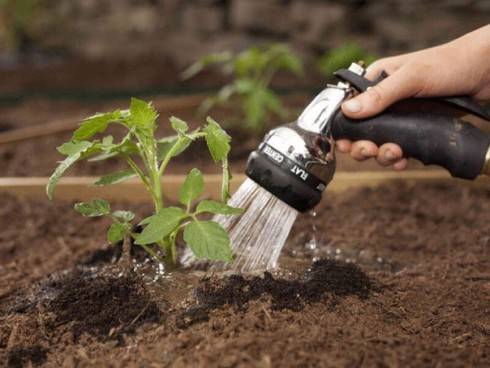
Therefore, they need to be watered regularly, without waiting for the soil to completely dry out. Excess moisture is also harmful to tomatoes. Therefore, you need to observe the golden mean.
Feeding
Feeding is started no earlier than 15 days after disembarkation. The first top dressing is done with a complex fertilizer with trace elements.
In the initial period, cherry tomatoes need a sufficient amount of phosphorus to form the root system. This is a sparingly soluble element, so it is so important to introduce it in the fall so that by the time the seedlings are planted, it has time to dissolve. Good help to build up the root system and humates. In order for them to be better absorbed, it is better to carry out foliar feeding with their solution.
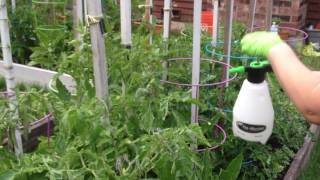
Further top dressing should be regular, every 2 weeks. It is better to use a water-soluble fertilizer with an NPK ratio of 1:0,5:1,8. During the growing season, it is necessary to carry out foliar top dressing with a solution of boric acid and the same solution of calcium nitrate. Tomatoes and magnesium are needed, especially on sandy and sandy loamy soils.
Formation of cherry tomatoes
This is a very important operation. If you do not pinch tomatoes, fruit ripening is delayed. Most often, cherry tomatoes in the open field leave one trunk and stepson under the lower flower brush. If the summer is warm, it is permissible to leave the stepson above the flower brush, forming a tomato in three trunks. Only standard varieties of cherry tomatoes do not stepchild.
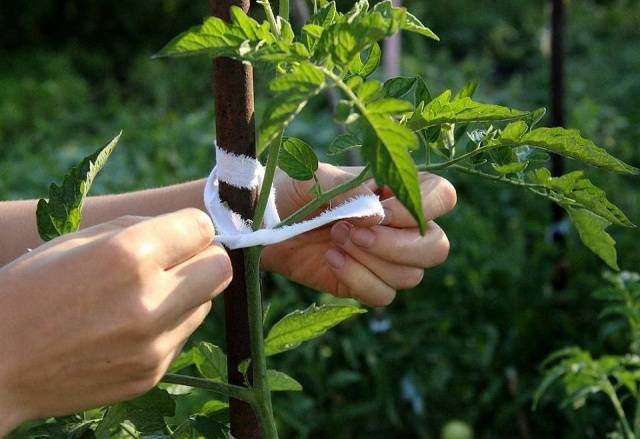
Disease Prevention
Growing cherry tomatoes is impossible without taking care of plant health. This type of tomato is considered quite resistant to diseases. But preventive treatments from phytophthora are also mandatory for them. Before the formation of the first flower brush, it is permissible to apply chemical fungicides. With the onset of flowering, it is better to switch to folk methods.
In the fight against diseases, mulching the soil around the tomatoes is of great help. If the plants are not in contact with the ground, they are much less likely to get sick. In addition, the mulch will keep the soil moist, which will allow you to water the cherry tomatoes less often, the earth will become looser and more fertile. For mulch, hay or any grass that does not contain weed seeds is suitable. The thickness of the mulching layer should not be less than 5 cm.

Cherry in the greenhouse
Growing cherry tomatoes in a greenhouse is not much different from growing in open ground. The distance between plants when planting depends on how much they will be loaded with crops. If you plan to keep the plants in 3 stems, it is better to leave at least 70 cm between the tomatoes.

Caring for cherry tomatoes in a greenhouse, in addition to watering, fertilizing and shaping, also includes maintaining the correct thermal regime. On hot days, greenhouses need to be ventilated, preventing the temperature in it from rising above 30 degrees. It’s not just stress for plants. Pollen under such conditions becomes sterile, pollination and fruit set do not occur.
They will not only attract pollinating insects, but also improve the taste of the fruit.
An important measure in the greenhouse cultivation of cherry tomatoes is the timely pinching of the tops of plants. It should be carried out a month before the air temperature is below plus 8 degrees. This will allow all the small tomatoes to ripen on the bushes.
Cherry on the balcony and at home
It is not always possible to grow tomatoes in the country, but you can do it at home. Small-fruited tomatoes are the best option for growing on the balcony. Consider growing cherry tomatoes on the balcony step by step.

Seedling
Tomato seedlings on the balcony can be grown in the traditional way. But, it is quite possible to sow tomatoes and immediately to a permanent place – in pots with a volume of at least 3 liters. For insurance, at least 3 seeds are planted in each pot. After germination, the strongest plant is left.
A very important point is the timing of sowing. They depend not only on the desire of the home gardener, but also on the ability to organize lighting for plants.
Further care for tomatoes on the balcony will be to provide it with moisture, nutrition and light.
Watering
The limited volume of the pot requires fairly frequent watering, especially in the hot season. With a lack of moisture, the ovaries on plants may fall off. Overwatering tomatoes is fraught with root rot. It should be watered if the top layer of soil to a depth of 2 cm is dry. Remove excess water from the pan after watering.

Feeding
A small amount of soil will not allow cherry tomatoes to grow without regular top dressing. It is better to carry them out with a water-soluble complex fertilizer, for example, Kemira Lux, at intervals of two weeks. You can alternate mineral supplements with organic ones. For such small volumes, it is better to buy ready-made organic top dressing in the store and use it in accordance with the instructions.
Lighting
With insufficient lighting, the process of photosynthesis in plants slows down, which affects not only its development, but also yields. Tomatoes grow well if the window or balcony is oriented to the south, southeast or southwest. If this is not possible, you will have to highlight the cherry tomatoes. Light day for them should be at least 12 hours.
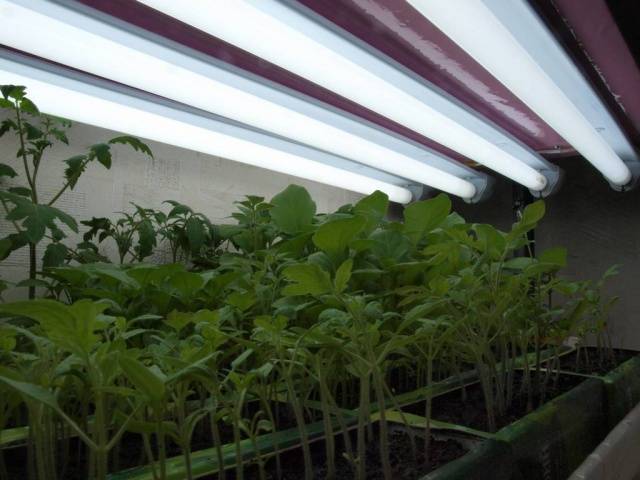
Reproduction
When the growing season of the tomato comes to an end, the plant can be propagated by stepchildren. Break off a shoot from a tomato bush and put it in water. After a week, it will grow roots, and it can be planted in a pot of soil.
This method of propagation is suitable not only for cherry tomatoes, but also for any tomatoes.
Formation for undersized standard tomatoes is not necessary, but it will be useful to strengthen the bush with a garter so that the pot does not turn over under the weight of the fruit.
The best hybrids are Cascade Red F1 and Cascade Elo F1 in red and yellow.
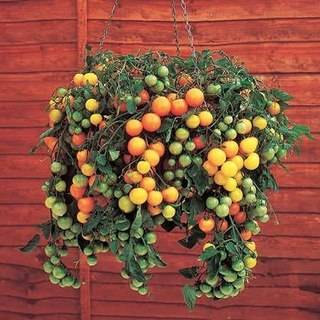
Conclusion
Cherry tomatoes are a great alternative to large-fruited tomatoes. Properly selected cherry varieties lose quite a bit in yield, but win in taste and benefits.










